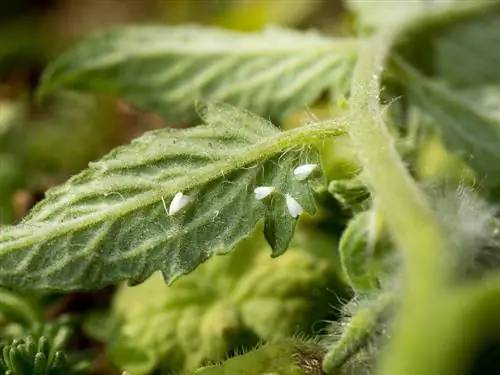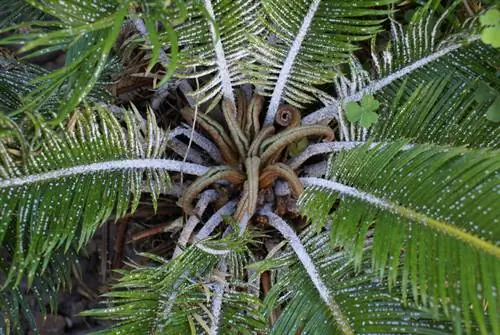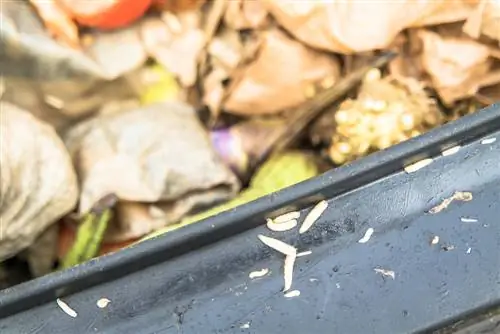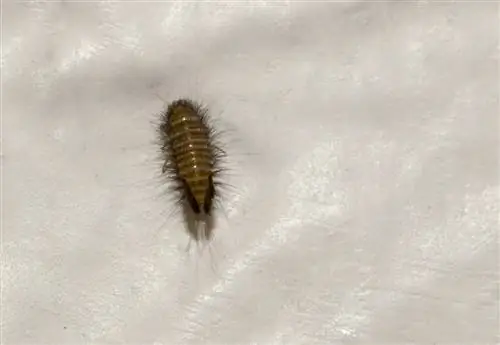- Author admin [email protected].
- Public 2023-12-16 16:46.
- Last modified 2025-01-23 11:22.
The gardener should actually be pleased that the whitefly has high demands on the temperature. Outdoor plants are therefore relatively protected in the local climate. However, the situation is completely different when growing in a greenhouse. Due to the high humidity and warmth, the pests feel very comfortable here and multiply rapidly. Here are some steps you can take to treat an infestation.
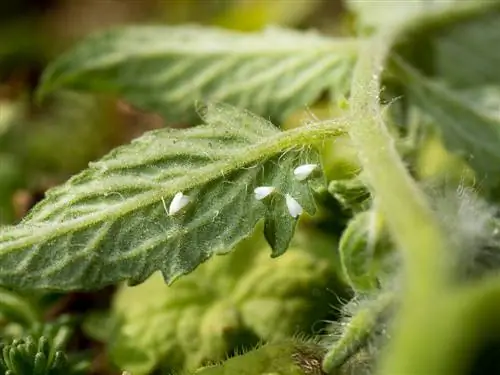
How do I fight whitefly in the greenhouse?
To effectively combat whitefly in the greenhouse, you can hang up yellow stickers, use parasitic wasps, isolate infected plants or use various home remedies such as water-rapeseed oil solution, soft soap and basil.
Combat measures
You can choose from the following methods to combat whitefly:
- Yellow sticker
- Parasitic wasps
- Relocation of affected plants
- Home remedies
Yellow sticker
Yellow stickers (€5.00 on Amazon) are yellow-colored adhesive tape that you hang from the ceiling of your greenhouse. Whiteflies jump on the paint and stick to the sticky film. You can find the utensils in every specialist store. After a while you should change your yellow sticker.
Parasitic wasps
The parasitic wasp is considered a natural predator of the whitefly, but is completely harmless to your plants. The trade offers small bags from which the beneficial insects hatch. However, the application is only possible under a few restrictions, namely when
- The temperature in your greenhouse is at least 18°C.
- the humidity in your greenhouse is at least 70%.
- the beneficial insects can find enough food locally.
- You have enough patience.
- You want to combat the infestation between March and September.
Relocation of affected plants
If only a few plants are affected by whitefly, you should isolate them as quickly as possible so that the pest does not spread to he althy specimens. This is very easy with potted plants. If you have to dig up a plant specifically, you should consider whether the risk of it surviving the change of location is really worth it. How to proceed with isolation:
- Choose a faraway beach location.
- This should be cool and airy.
- Check the plant well.
- As soon as you no longer see any flies, place the plant in its old location.
Home remedies
The following homemade home remedies have an effective effect:
- Water-rapeseed oil solution
- soft soap
- Planting basil
- Shower plants with cold water (helps against maggots)
- nettles or herbs soaked in water

